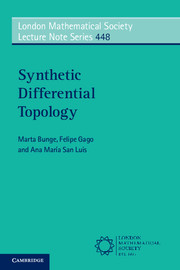PART I - TOPOSES AND DIFFERENTIAL GEOMETRY
Published online by Cambridge University Press: 16 March 2018
Summary
With the introduction of toposes as a categorical surrogate of set theory whose underlying logic is Heyting and where no appeal to an axiom of choice is permitted, it became possible to formally introduce infinitesimals in the study of differential geometry in the same spirit as that of the work carried out by Charles Ehresmann and AndréWeil in the 50s. Whereas the known models that are well adapted for the applications to classical mathematics are necessarily Grothendieck toposes, the theory of such is not enough to express the richness of the synthetic theory. For the latter one needs the internal language that is part of the theory of toposes and that is based on the axiom of the existence of a subobjects classifier. This first part is an introduction to topos theory and to synthetic differential geometry, both of which originated in the work of F.W. Lawvere. These introductory presentations will gradually be enriched as we proceed, but only as needed for the purposes of this book.
Information
- Type
- Chapter
- Information
- Synthetic Differential Topology , pp. 7 - 8Publisher: Cambridge University PressPrint publication year: 2018
